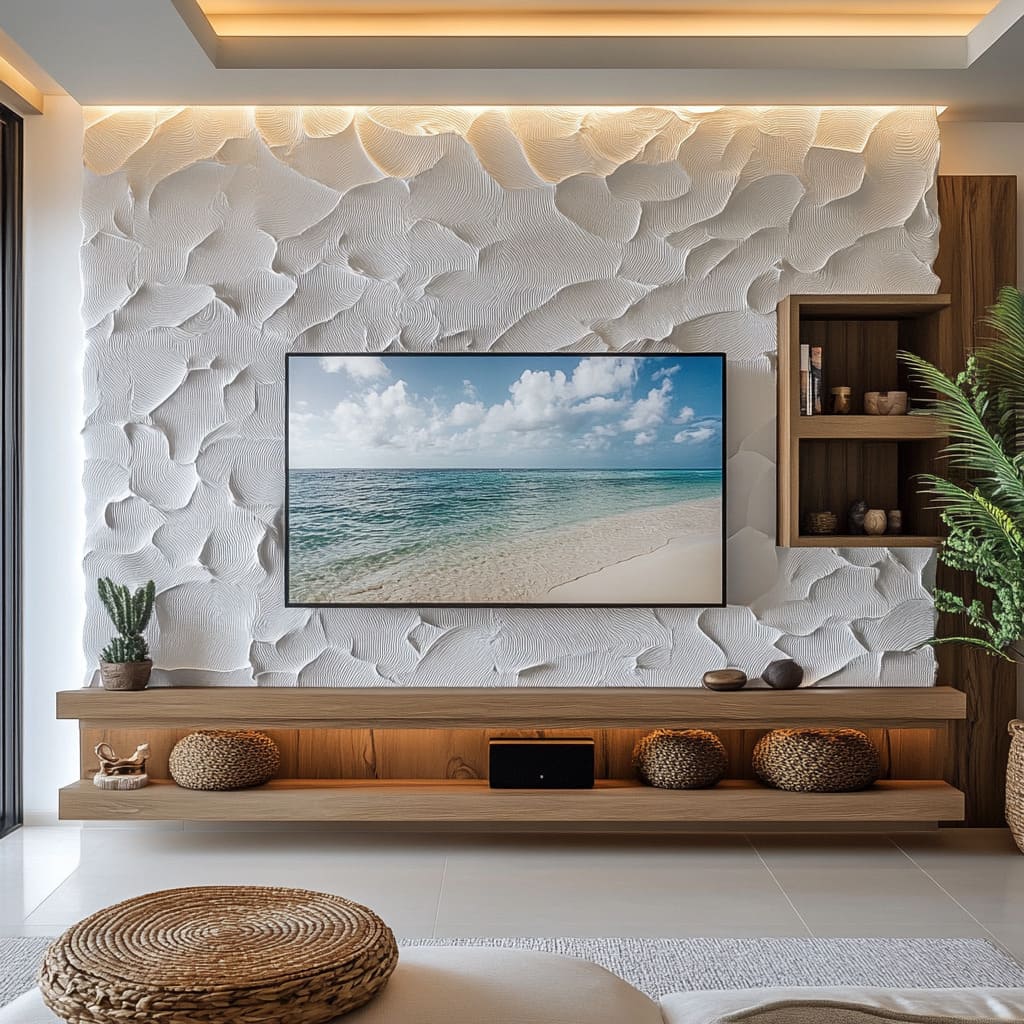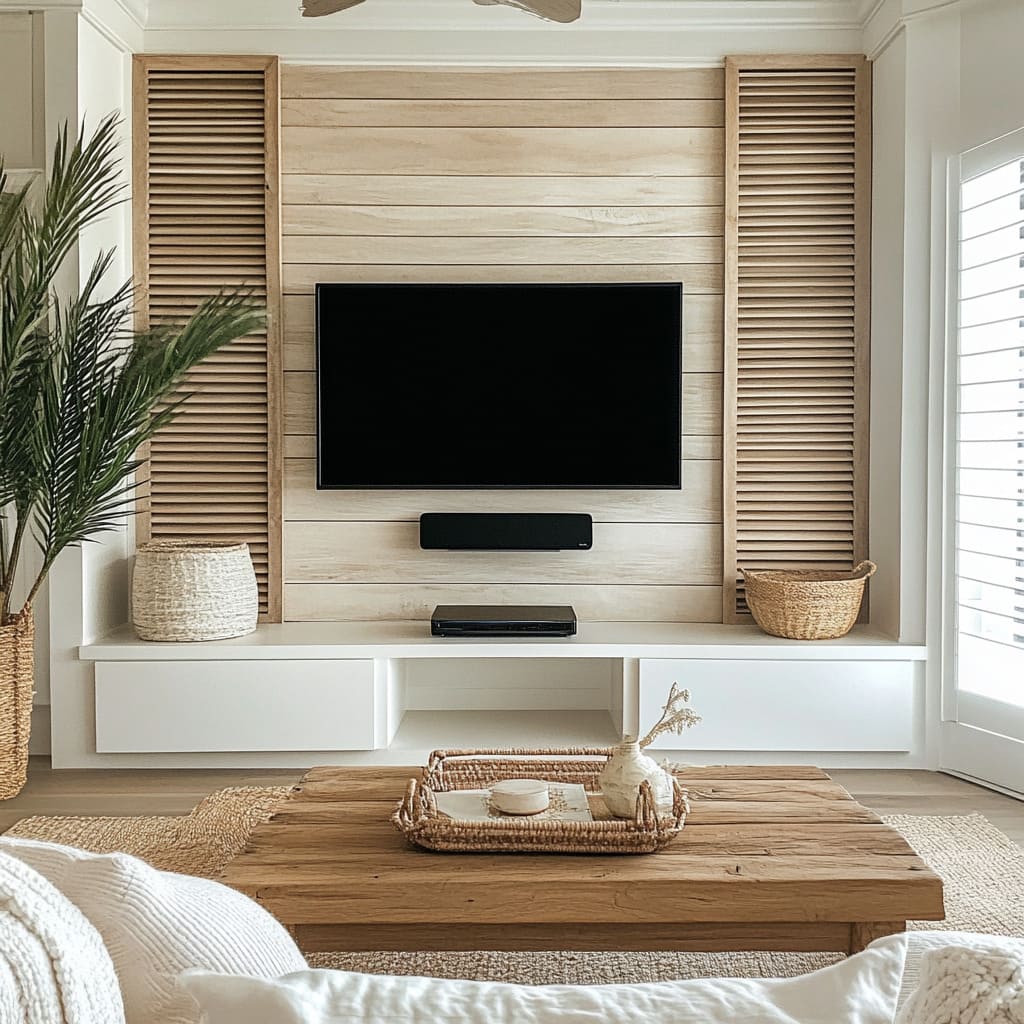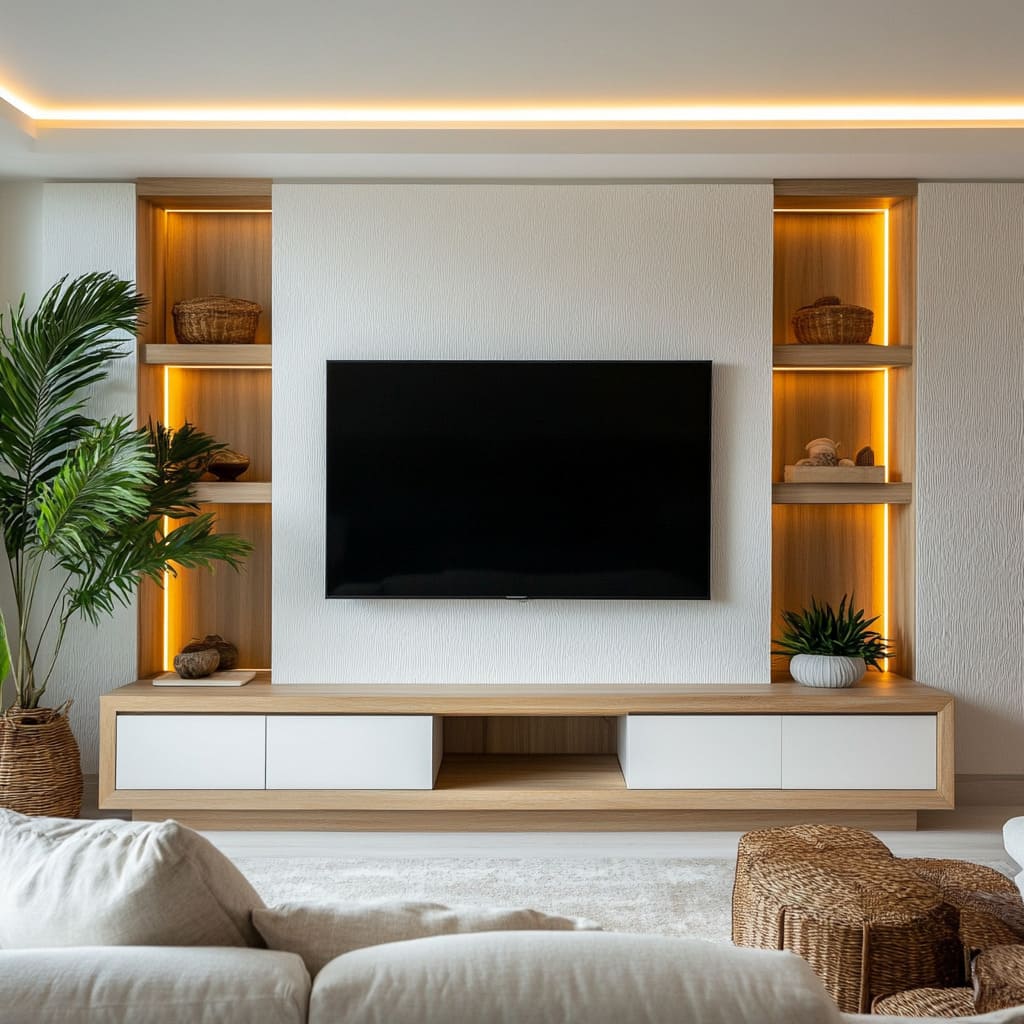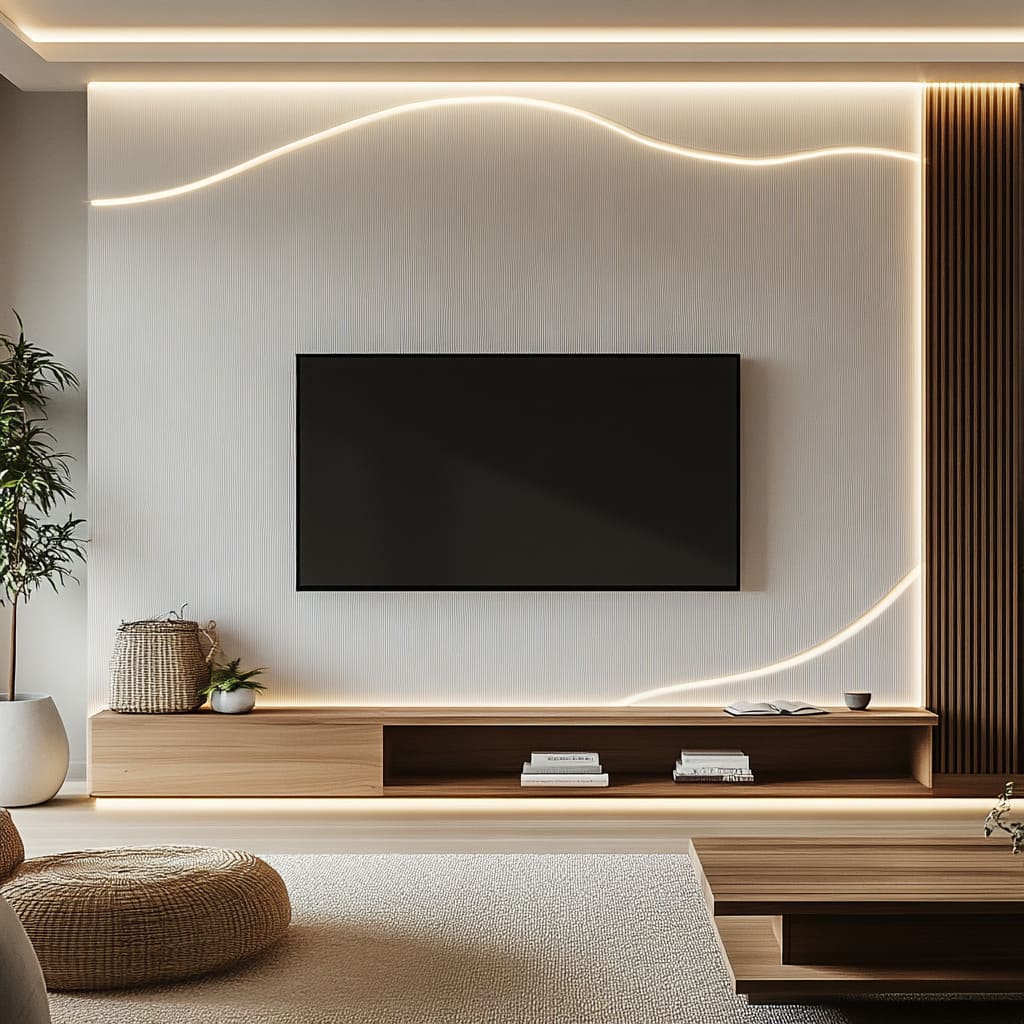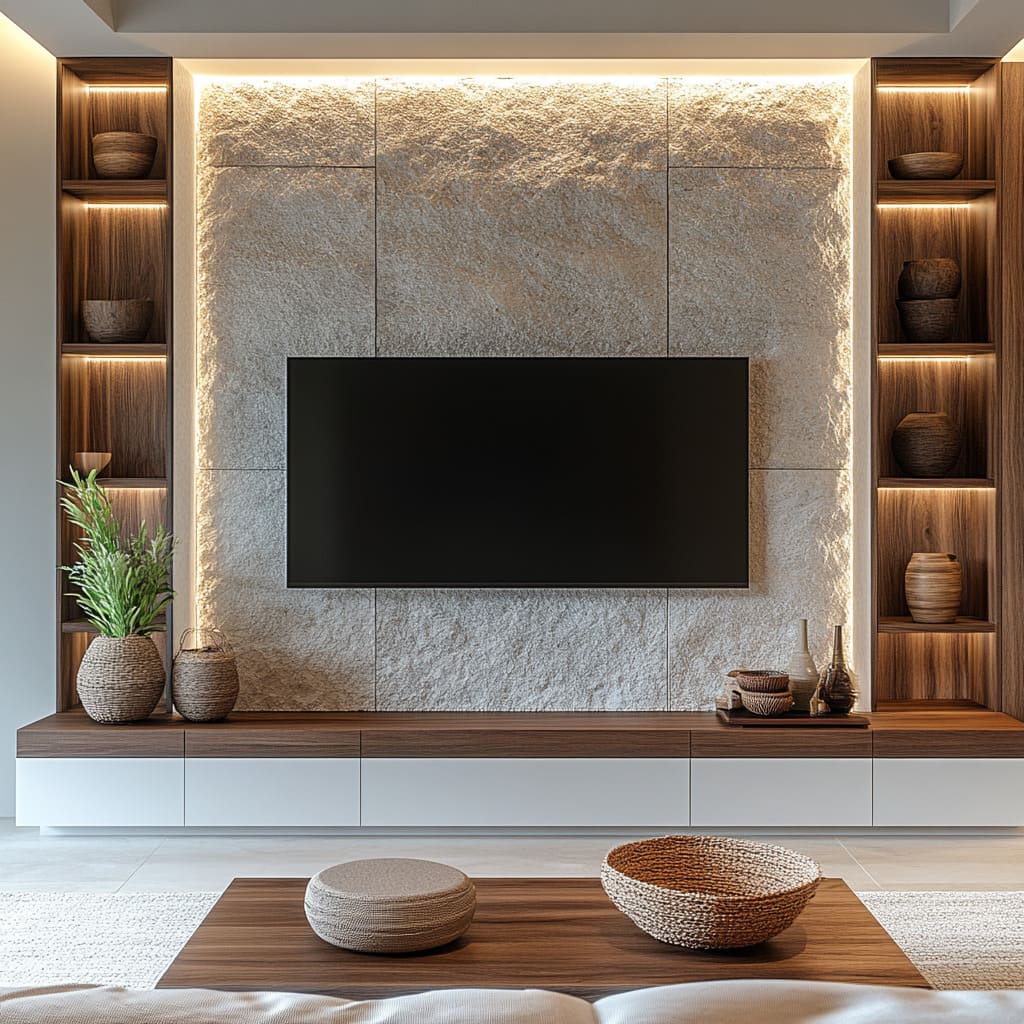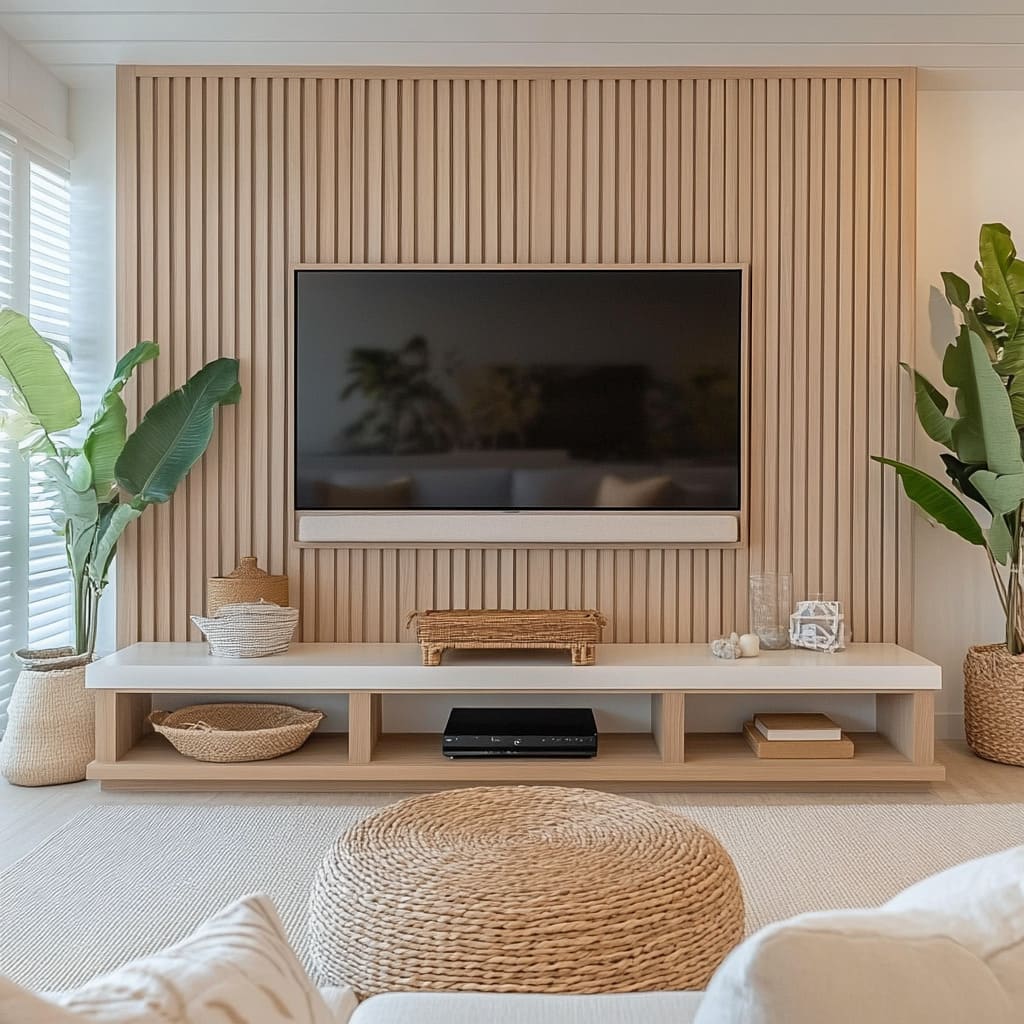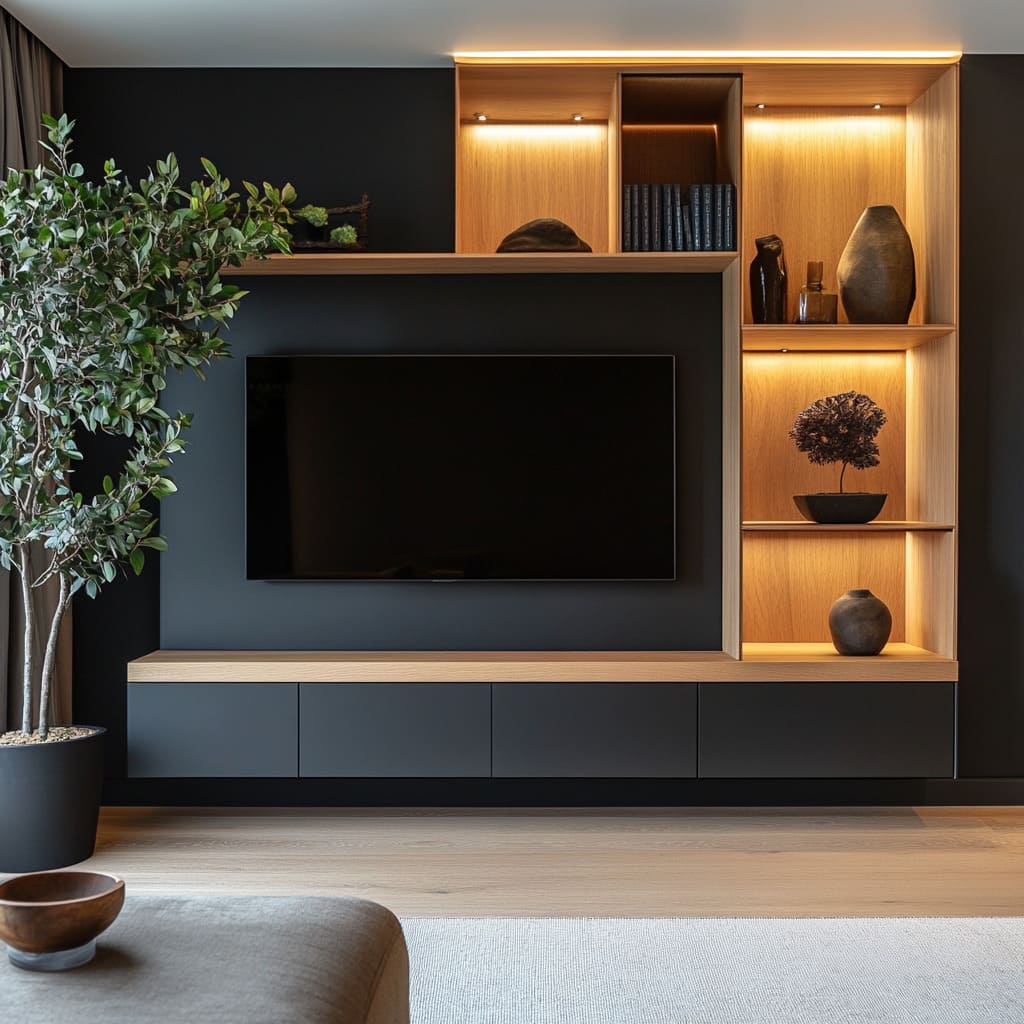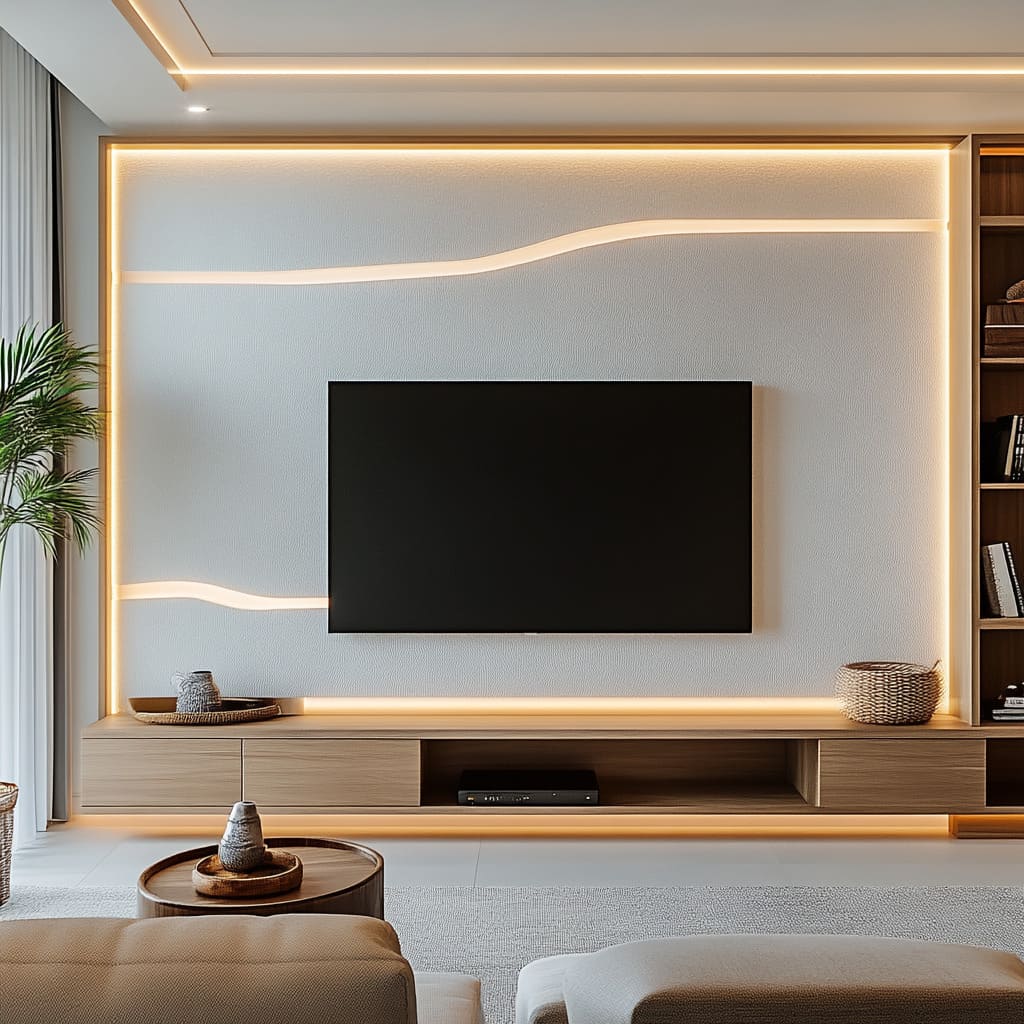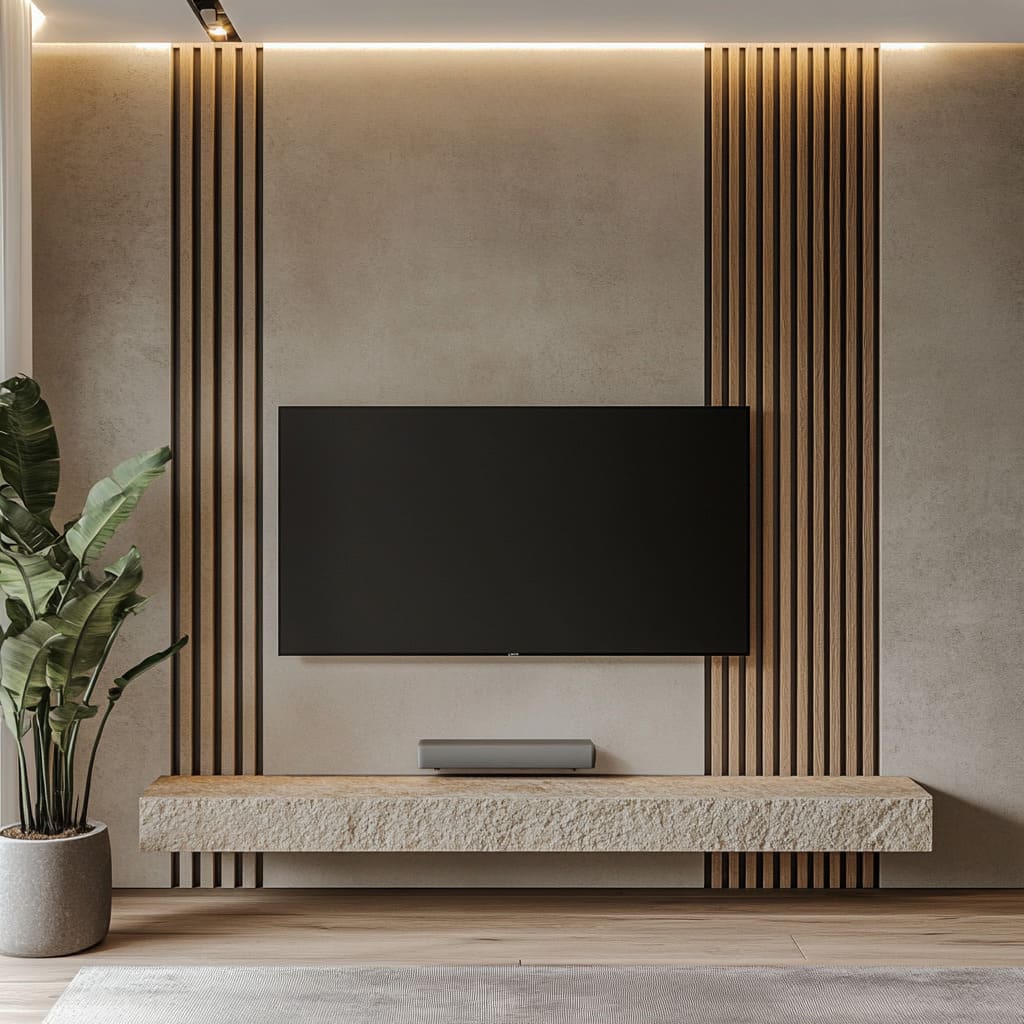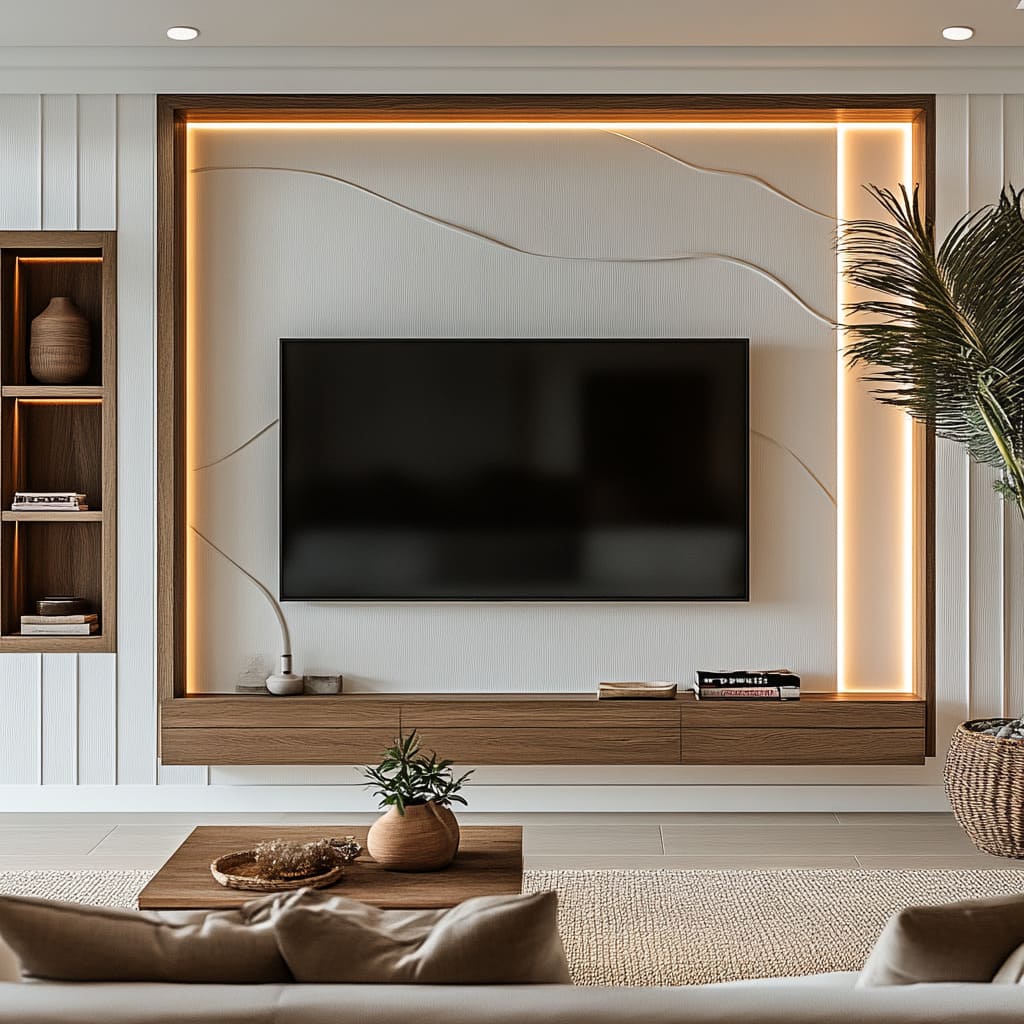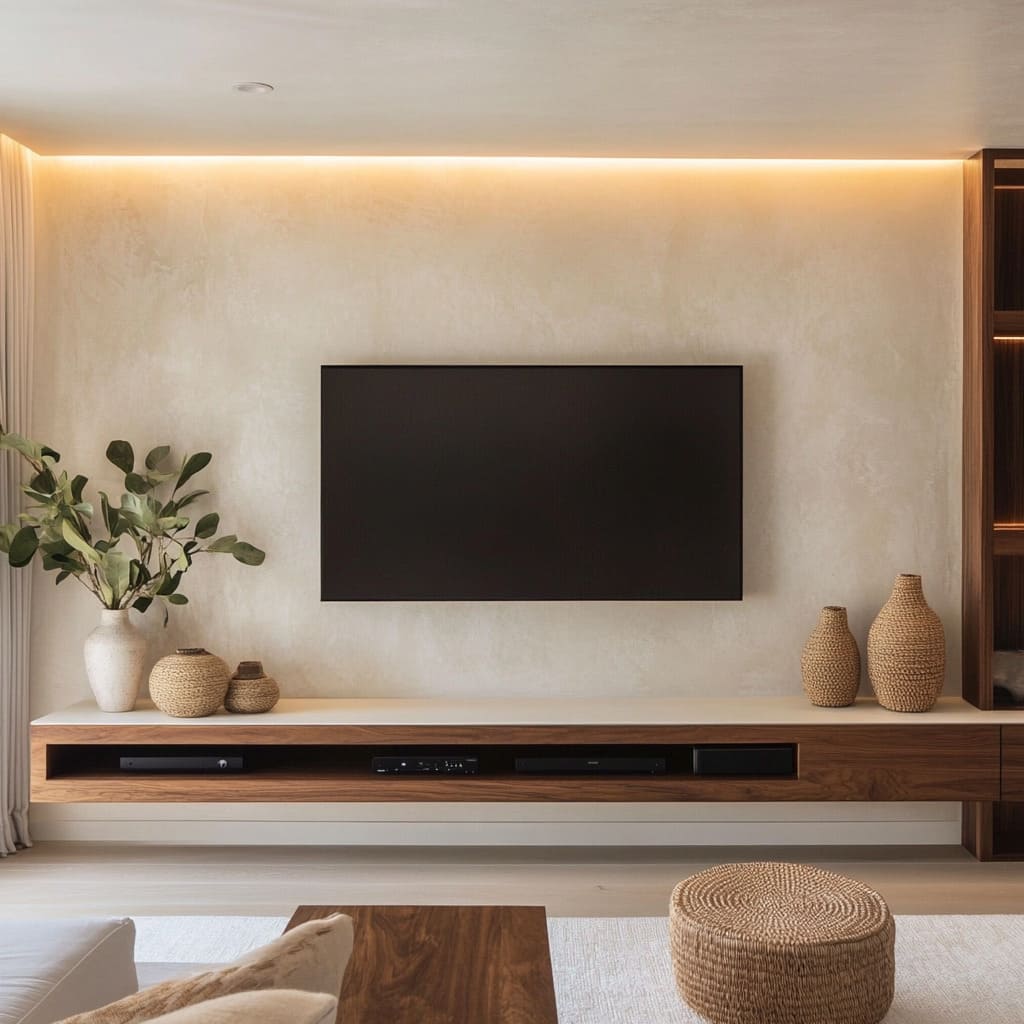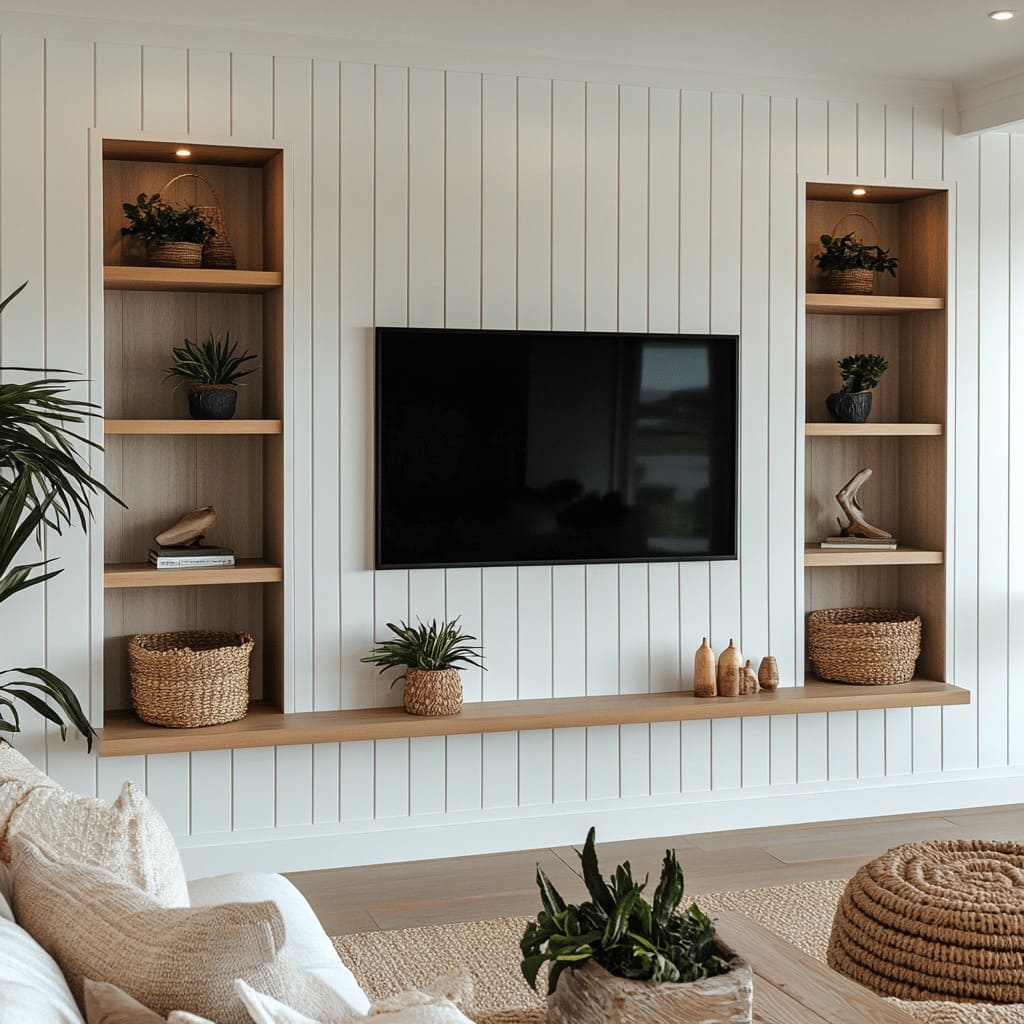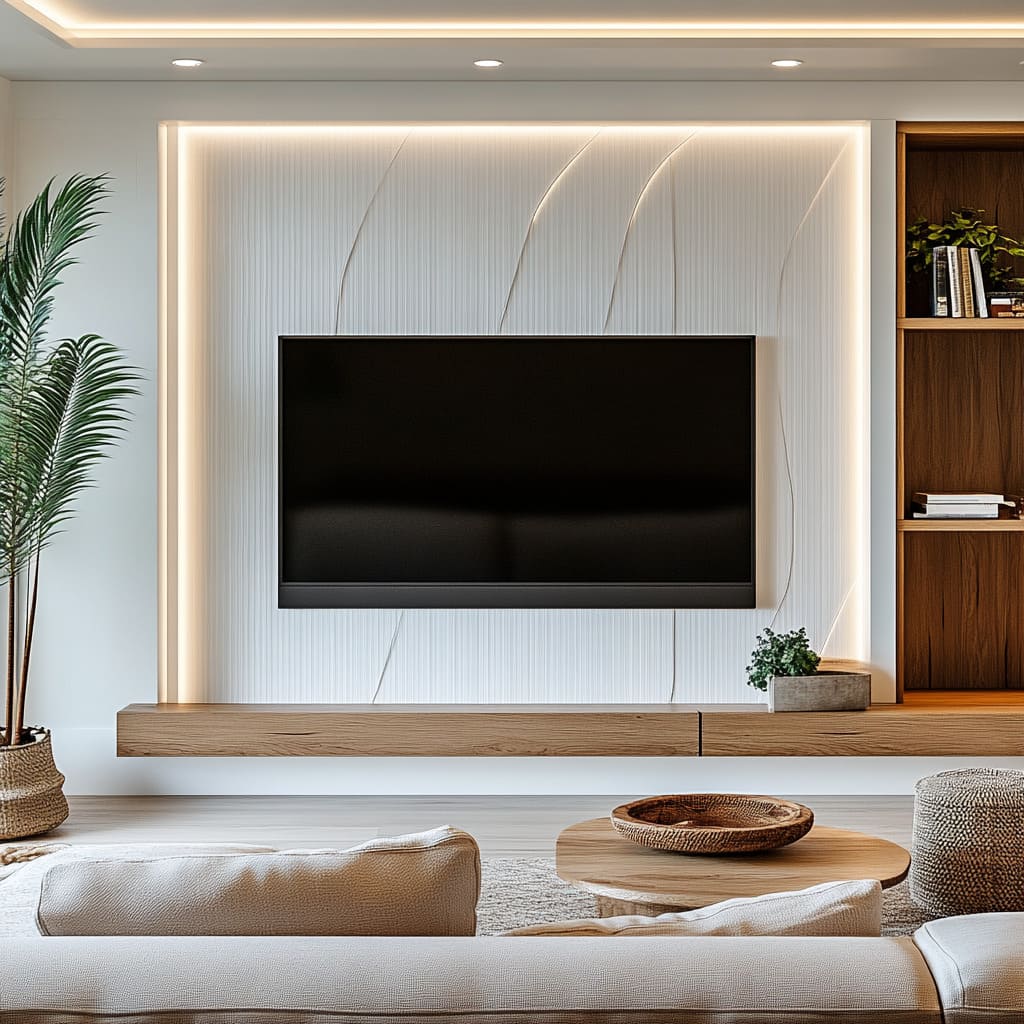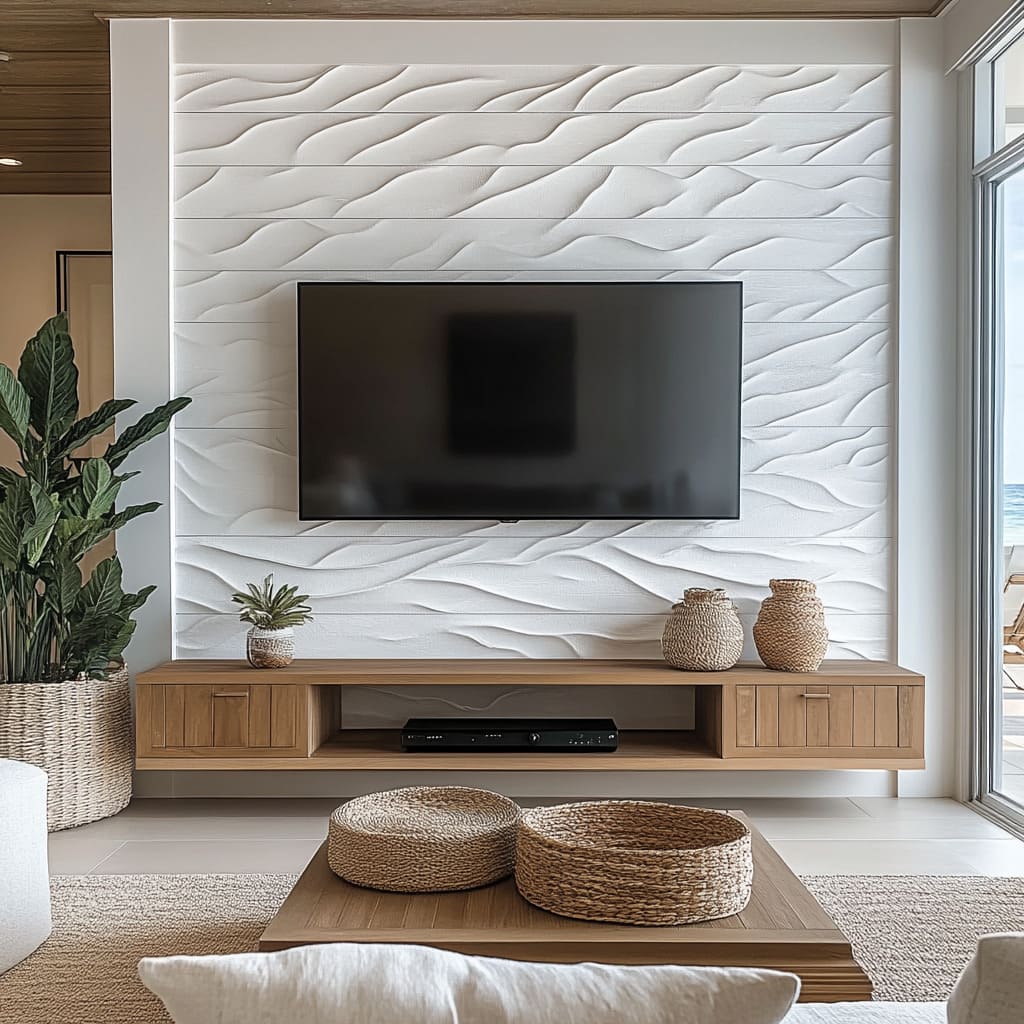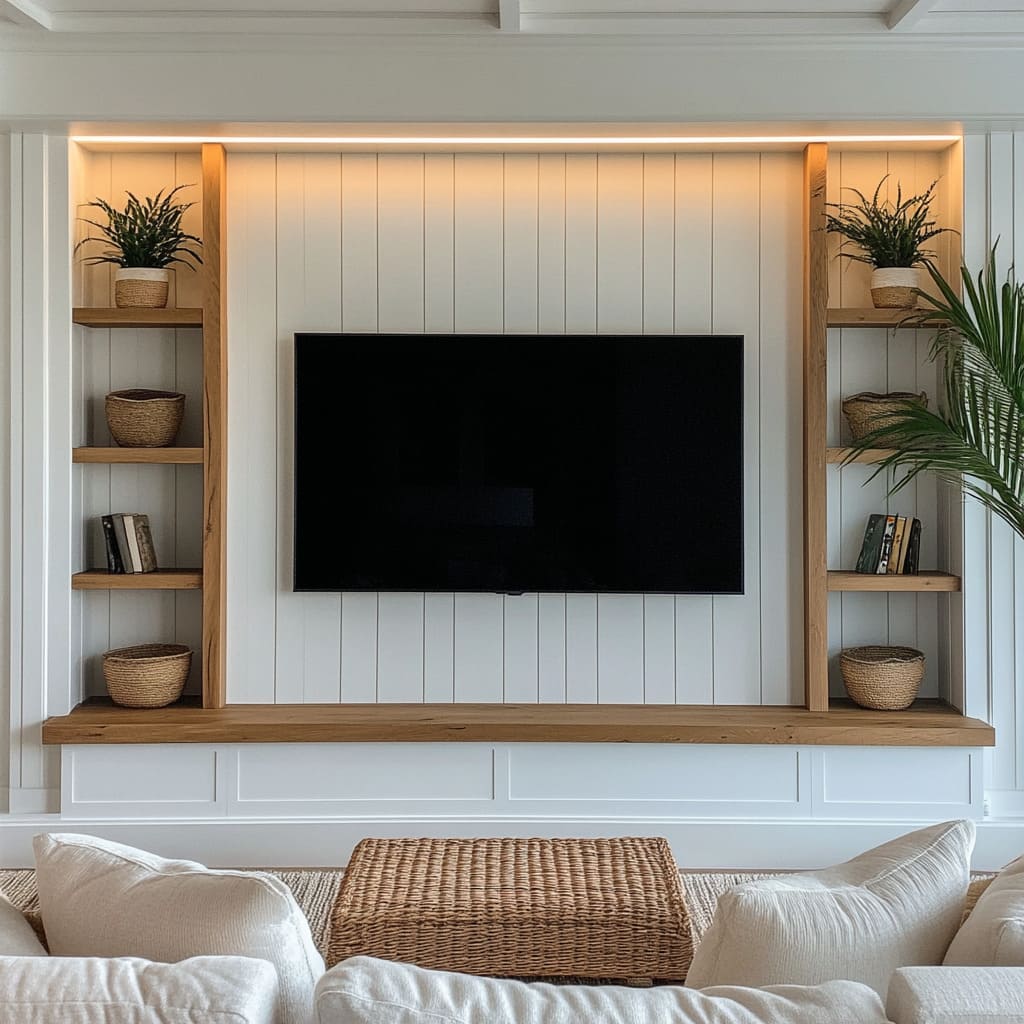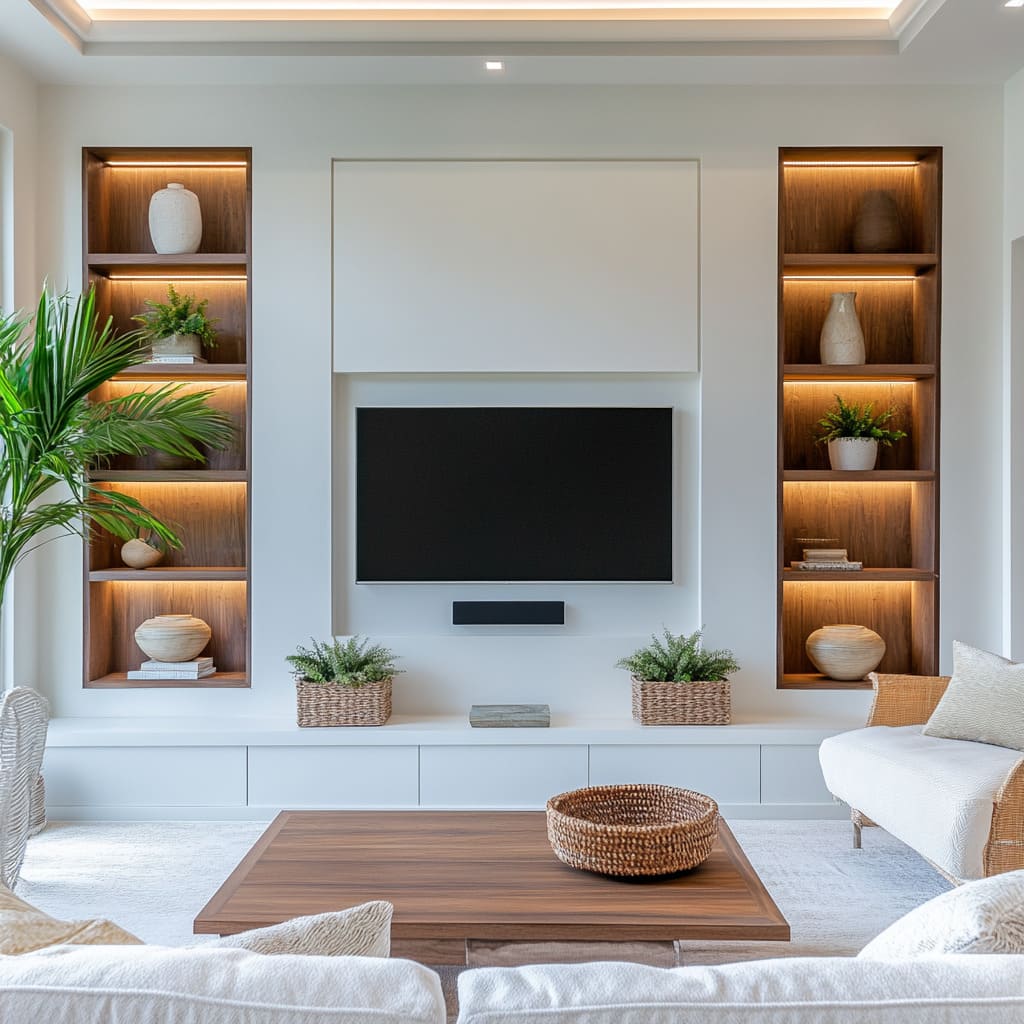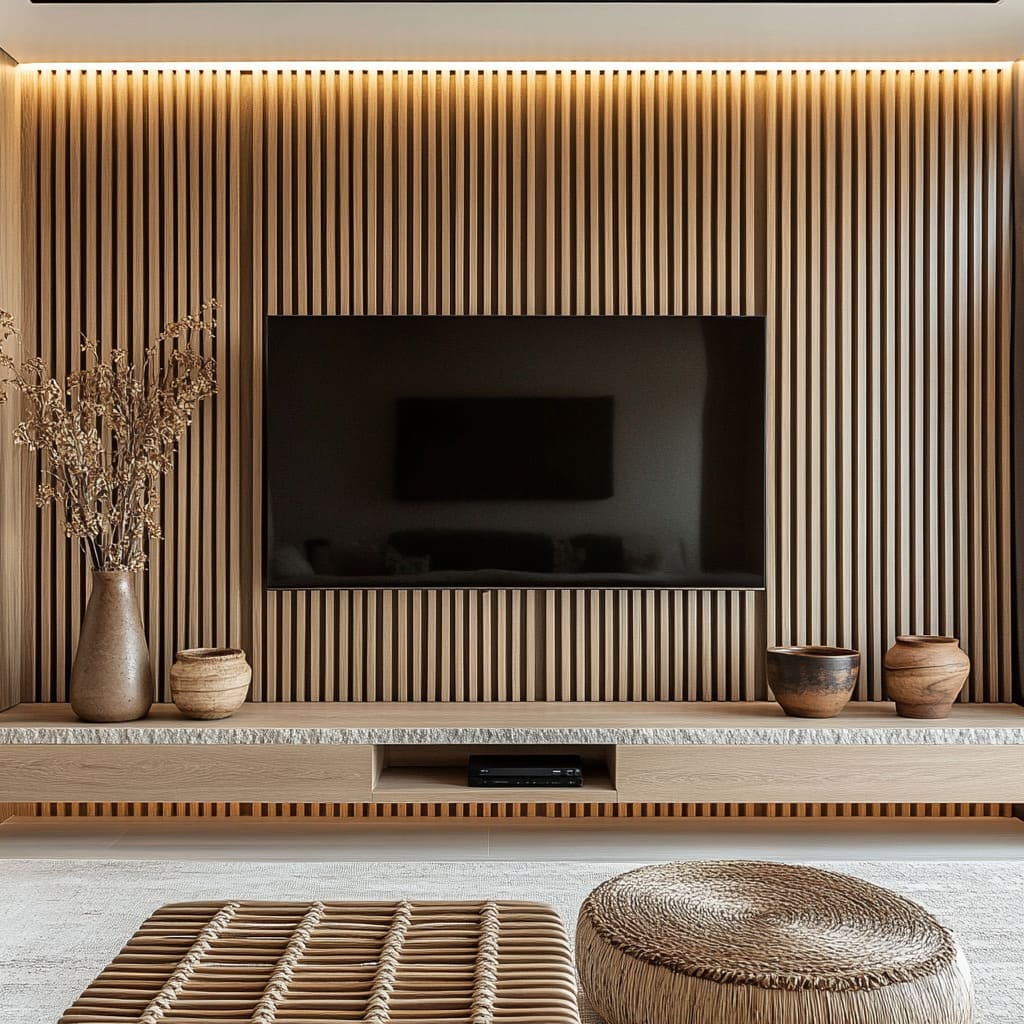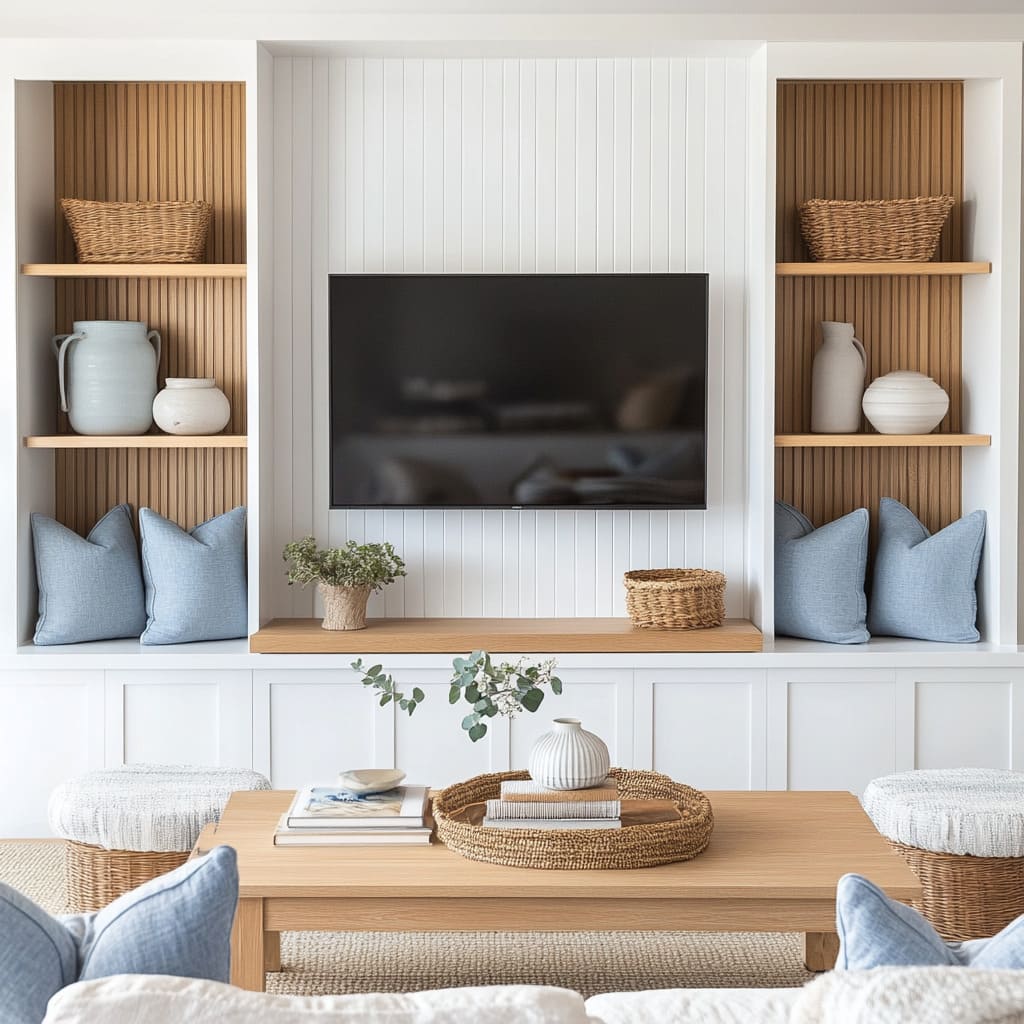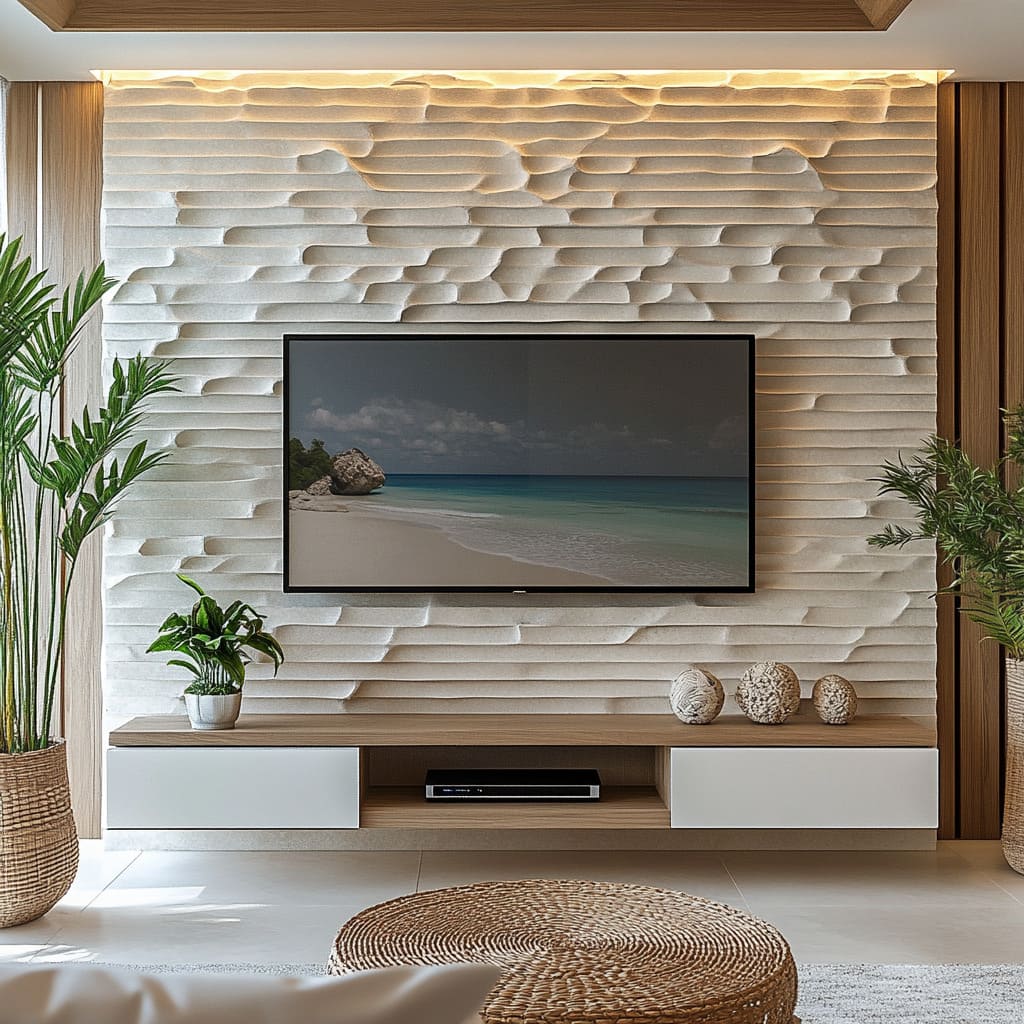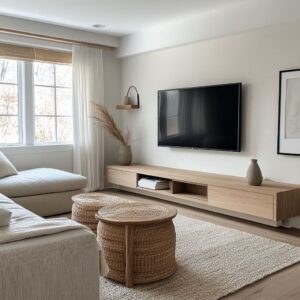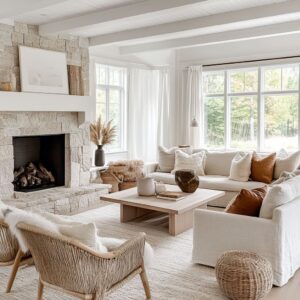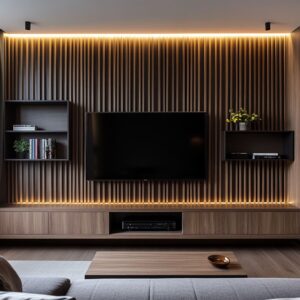A TV wall is more than just a place to mount a screen—it’s a statement piece that shapes the entire feel of a living space. Whether it’s a modern setup with sleek built-in storage or a cozy design featuring natural textures, every detail matters.
The right combination of materials, lighting, and layout can turn an ordinary wall into a visually balanced, functional centerpiece. The challenge is making the TV blend seamlessly into the room without looking like an afterthought.
Some designs use floating consoles to keep things light and uncluttered, while others introduce vertical panels to create a sense of height. Thoughtful lighting choices, like recessed LED strips, bring out the texture in plaster or wood finishes, making the wall feel more layered and inviting.
If you’re looking to design a TV wall unit that feels both stylish and practical, the key is in the details. From hidden storage to carefully placed décor, the best designs achieve a natural flow between technology and home aesthetics.
With the right approach, a TV wall can be more than just a screen—it can become a striking focal point that enhances the entire space.
Mastering Texture: Making a Depth in TV Wall Designs
A well-designed TV wall isn’t just a surface to mount a screen—it’s a carefully layered composition that adds depth, contrast, and visual interest. One of the most effective ways to achieve this is through a mix of textures.
Whether it’s smooth plaster meeting raw stone or warm wood against cool concrete, the way materials interact can completely shift the atmosphere of a space. Textured plaster, for example, does more than just provide an organic, handcrafted look.
When sculpted with subtle curves or soft ridges, it plays with light, creating highlights and shadows that move throughout the day. This shifting effect keeps the design dynamic, preventing the wall from looking flat or static.
Designers often amplify this effect by placing LED strips along the ceiling or behind floating shelves, letting the contours catch the light from different angles.
The pairing of contrasting materials is another technique that instantly makes a TV wall more engaging. A rough-hewn stone ledge set beneath a sleek, polished wood panel creates an interplay of textures that feels balanced rather than chaotic.
The contrast isn’t just visual—it’s something that can be felt, even if only subconsciously. This is why designers often mix matte and glossy finishes, or combine grainy, weathered wood with crisp, painted surfaces.
Subtle choices like these are what separate ordinary walls from those that feel intentional and well-composed. Whether it’s a home inspired by relaxed coastal interiors or modern industrial lofts, layered textures bring dimension and warmth, making the space feel thoughtfully designed rather than simply decorated.
Finding the Balance: Warmth and Coolness in TV Wall Design
One of the most overlooked aspects of TV wall design is the careful balance between warm and cool materials. This contrast plays a major role in how a space feels—too much warmth, and the room can seem overly rustic; too much coolness, and it risks feeling uninviting.
The secret lies in combining both elements in a way that feels natural and intentional. A common approach is to start with a neutral base—often white or off-white—and introduce warmth through wood accents.
Oak, walnut, and lightly distressed planks are frequently used to add depth without making the space feel heavy. The contrast between smooth, painted surfaces and the organic patterns of wood grain creates a sense of balance that keeps the design from feeling monotonous.
For a more modern or industrial look, designers often introduce cool-toned materials like concrete or plaster. While these materials add a sleek and structured element, they can feel stark on their own.
That’s where softer, natural materials come in—woven baskets, textured rugs, or rattan ottomans help to break up the hard surfaces, making the room feel more welcoming. Even subtle choices, like a wooden floating console against a white or gray wall, help create a space that feels thoughtfully layered rather than flat.
This balance is especially noticeable in open-concept homes, where TV walls need to blend seamlessly with the surrounding space. Whether it’s a cozy, wood-accented wall in a Scandinavian-style interior or a bold mix of concrete and walnut in a loft-inspired setting, getting the right mix of warm and cool materials ensures that the design feels both grounded and inviting.
Stretching Space: How Vertical Elements Transform TV Wall Design
A well-designed TV wall does more than just frame the screen—it shapes how the entire room feels. One of the most effective tricks designers use is verticality.
By incorporating tall panels, slats, or shelving units that extend from floor to ceiling, they create the illusion of height, making a room feel more expansive than it actually is. Wood slats are a popular choice for this effect.
Whether spaced evenly or arranged in varying widths, they guide the eye upward, reinforcing a sense of openness. The same principle applies to built-in shelving that flanks the TV—when shelves stretch to the ceiling, they make walls seem taller while adding functional storage.
Even slim, vertical beams in contrasting tones can subtly extend the visual proportions of a space.
Lighting plays a key role in making these elements even more effective. Many designs incorporate concealed LED strips along the upper edges of the wall, casting a soft glow that enhances the sense of height.
By keeping the lighting indirect and continuous, designers eliminate harsh cutoffs that would otherwise draw attention to where the wall ends. This technique works especially well in living spaces with lower ceilings or compact layouts, where maximizing perceived space is essential.
Whether the style leans towards sleek minimalism or warm, textured layers, vertical features help TV walls feel architectural and intentional rather than just a backdrop for a screen.
Lighting That Shapes the Design
A well-planned lighting scheme can completely change how a TV unit design looks and feels. Instead of relying on a single light source, designers use a combination of recessed LEDs, cove lighting, and hidden spotlights to highlight architectural details and textures.
This isn’t just about visibility—it’s about adding depth, contrast, and a subtle sense of movement to the wall. One of the most effective techniques is layered lighting.
A perimeter LED strip, often tucked into the ceiling or along the edges of the TV wall, frames the entire structure, giving it a soft, floating effect. At the same time, smaller LED strips placed inside shelving niches illuminate décor pieces, drawing attention to curated objects like ceramics, books, or sculptural accents.
This creates a visual hierarchy where the eye naturally moves between different levels of depth rather than staying fixed on the TV.
Color temperature plays a big role in achieving the right balance. Warm white or golden-hued lighting is almost always preferred over cool-toned LEDs, which can make natural materials like wood, rattan, and stone appear harsh or washed out.
By choosing softer tones, designers ensure that the lighting enhances the warmth of the space rather than competing with it. Subtle lighting choices also help define the mood of the room.
A softly glowing strip behind a textured plaster wall brings out the depth of the surface, while an illuminated wooden panel creates a cozy, welcoming ambiance. These small but thoughtful details are what separate a basic TV wall from a fully integrated, high-impact design.
The Floating Effect: Why Wall-Mounted Consoles and Hearths Work So Well
A well-designed TV console isn’t just about storage—it’s a visual anchor that brings balance to the entire TV wall. One of the most effective ways to achieve a clean, modern look is by incorporating floating elements, whether it’s a wood console, a stone hearth, or a sleek white cabinet.
By lifting these surfaces off the ground, designers create an illusion of more floor space, making the room feel lighter and more open. Beyond aesthetics, the floating effect serves a practical purpose.
By eliminating bulky legs or a grounded base, the area beneath the console stays uncluttered, making it easier to clean and giving the space a more refined appearance. To keep everything looking seamless, designers often build in hidden brackets or recessed supports within the wall, ensuring that the structure remains solid without visible hardware.
Cable management is another key factor. The best floating consoles integrate concealed wiring solutions, so cords don’t disrupt the clean lines of the design.
Some designs even include subtle openings at the back to route cables neatly to nearby power sources. In spaces where a cozy atmosphere is the goal, a floating stone hearth can serve as both a functional ledge and a striking design element.
When paired with textured walls or slatted wood panels, the combination feels effortlessly modern yet inviting. Whether styled with a few decorative vases or left minimal, a well-executed floating console or hearth ensures the TV wall feels intentional and cohesive.
Why a Cohesive Color Palette Matters
Choosing the right colors is just as important as selecting materials and textures when you design a TV wall. While bold colors might seem like a way to make a statement, most well-executed designs rely on a more subtle approach.
Neutral tones—such as beige, white, greige, and soft wood hues—create a balanced backdrop that allows architectural details and textures to stand out. This restrained palette isn’t about playing it safe; it’s about highlighting what matters.
A plaster wall with sculptural curves or slatted wood panels gains more depth when it isn’t competing with strong color contrasts. Too many different hues can make a design feel chaotic, while a neutral foundation ensures the space feels refined and well-composed.
That doesn’t mean color is completely absent. Designers introduce it in small, intentional ways.
A coastal-inspired space might feature hints of teal in decorative pillows or vases, while an industrial-style room might incorporate black elements that tie into metal fixtures or shelving. The key is consistency—when an accent color is introduced, it usually repeats elsewhere in the room, creating a sense of flow rather than abrupt contrast.
This careful balance ensures the TV wall feels like an integrated part of the room rather than a separate, disconnected feature. Whether the goal is a warm, inviting space or a sleek, modern aesthetic, maintaining tonal harmony keeps everything feeling cohesive and visually effortless.
Bringing Nature Into the Design: How Organic Elements Soften a TV Wall
A TV wall can easily become the most tech-focused part of a room, but the right balance of organic elements helps soften its presence. Instead of letting a large screen dominate the space, designers introduce natural materials and textures to create a more inviting, grounded atmosphere.
Large potted plants are a go-to choice, not just for their lush appearance but for the way they add movement and contrast. A tall, slender plant placed beside vertical wood slats can echo the lines of the design, reinforcing the sense of height.
Meanwhile, a broad-leafed plant in a woven basket brings in texture and helps break up the straight lines of shelving and consoles.
Beyond greenery, woven baskets, driftwood, and sculptural stone pieces play a subtle but essential role. These elements introduce irregular shapes that contrast with the clean, geometric lines of modern TV wall designs.
A hand-carved wooden bowl or an asymmetrical ceramic vase can shift the mood of the space, making it feel more relaxed and organic rather than purely structured. Even the wall surface itself can reflect natural forms.
Some designs incorporate plaster finishes with soft, flowing patterns that mimic waves or eroded stone, reinforcing a sense of movement. When paired with textured wood or raw-edged stone ledges, this combination adds a tactile quality that makes the entire wall feel more dynamic.
By weaving in organic elements, a TV wall transitions from being just a functional display area to a well-balanced part of the home—one that feels connected to nature while maintaining a refined, modern aesthetic.
Tying It All Together: How Foreground Furniture Completes a TV Wall
A well-designed TV wall doesn’t exist in isolation—it’s part of a larger composition that extends into the room. The furniture and décor placed in front of it play a big role in making the entire space feel cohesive.
Woven ottomans, carefully selected coffee tables, textured rugs, and accent pillows aren’t just decorative; they help bridge the gap between the TV wall and the seating area, making the room feel more inviting and balanced. These choices are far from random.
Designers carefully select pieces that reflect the materials and tones already present in the TV wall. A rattan ottoman might mirror the woven baskets on open shelving, while a coffee table with a stone top can subtly connect to a stone hearth.
Even small accessories—like a ceramic vase on the table that picks up the same color as a plaster-finished wall—are chosen with purpose, ensuring a sense of flow rather than visual clutter.
Beyond aesthetics, foreground décor also guides the eye through the space. By placing elements at different heights—such as a tall potted plant next to a lower-profile coffee table—designers create movement, leading the gaze naturally across the entire setup.
This layering effect makes the TV wall feel like a seamless part of the living area rather than just a background feature. The key to getting this right is balance.
Too much furniture can overwhelm the design, while too little can make the room feel incomplete. The best setups feel thoughtfully arranged, where every element plays a role in reinforcing the style, color palette, and materials of the TV wall.
With the right combination, the entire space feels polished and effortlessly connected.
A Clean Look That Lasts: Smart Storage and Hidden Tech in TV Walls
No matter how well-designed a TV wall is, visible cables, bulky media devices, and scattered accessories can quickly take away from its impact. That’s why concealed storage plays such a key role in modern TV wall setups.
By integrating hidden compartments, sleek lower cabinets, and discreet cable management solutions, designers keep everything looking polished without sacrificing functionality.
The best TV wall designs prioritize organization behind the scenes. Instead of leaving devices out in the open, built-in storage areas offer a place to tuck away streaming boxes, gaming consoles, and remotes.
Some setups even include push-to-open cabinet doors, removing the need for handles and reinforcing a seamless aesthetic. Another important detail is cable routing.
Designers often carve out dedicated pathways behind shelving or within floating consoles, ensuring that wires remain invisible. This small but crucial step keeps the wall looking uncluttered, preventing a tangle of cords from disrupting the clean lines of the design.
Ventilation is another factor that often goes unnoticed. Many modern TV walls incorporate slatted panels or discreet perforations within wooden cabinetry to allow airflow around electronics.
These details may seem purely decorative, but they serve a practical purpose—keeping media devices cool and running efficiently. By combining sleek storage with thoughtful cable management, a well-planned TV wall remains as functional as it is stylish.
The end result is a design that looks effortlessly neat, with everything in its place and nothing left out to distract from the overall aesthetic.
Bringing It All Together
A thoughtfully designed TV wall goes beyond being a simple background for a screen—it becomes a focal point that enhances the entire space. The best designs seamlessly integrate technology with materials, textures, and lighting, creating a setup that feels intentional rather than just functional.
Achieving this balance requires a careful mix of depth, contrast, and warmth. Textured surfaces like plaster or wood slats introduce dimension, while floating consoles and concealed storage ensure that practicality isn’t sacrificed for aesthetics.
Well-placed lighting highlights the design’s best features, drawing attention to sculpted walls, shelving, or architectural lines without overwhelming the space.
The key is cohesion—every detail, from the arrangement of shelves to the positioning of a simple woven ottoman, plays a role in shaping the overall look and feel. Whether the goal is a sleek modern setup, a cozy coastal retreat, or a bold industrial statement, a well-designed TV wall blends form and function effortlessly.
By layering textures, incorporating organic elements, and using light strategically, designers create walls that feel natural, inviting, and visually balanced. With the right approach, a TV wall doesn’t just house a screen—it becomes part of the home’s character, setting the tone for the rest of the space.
